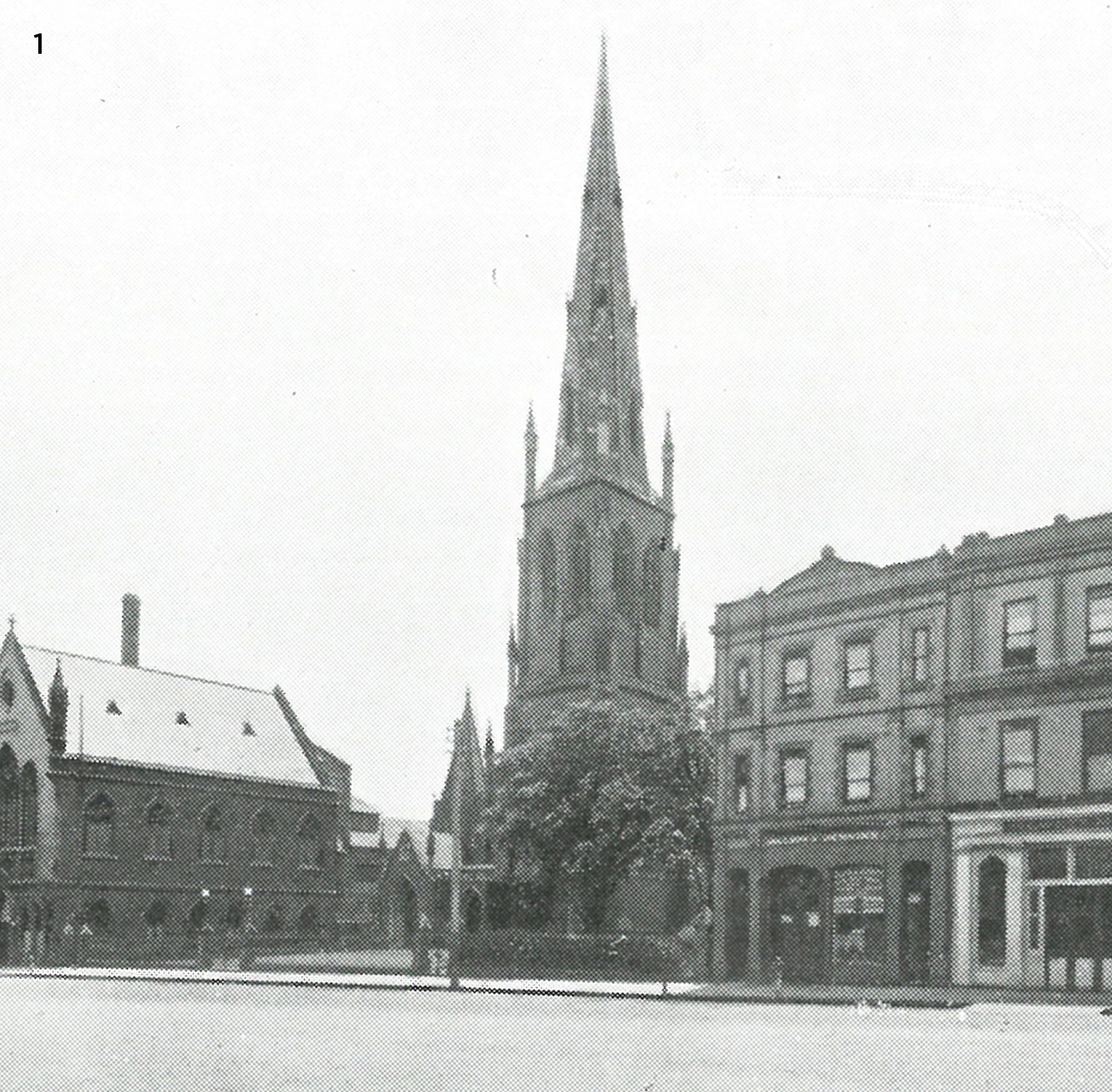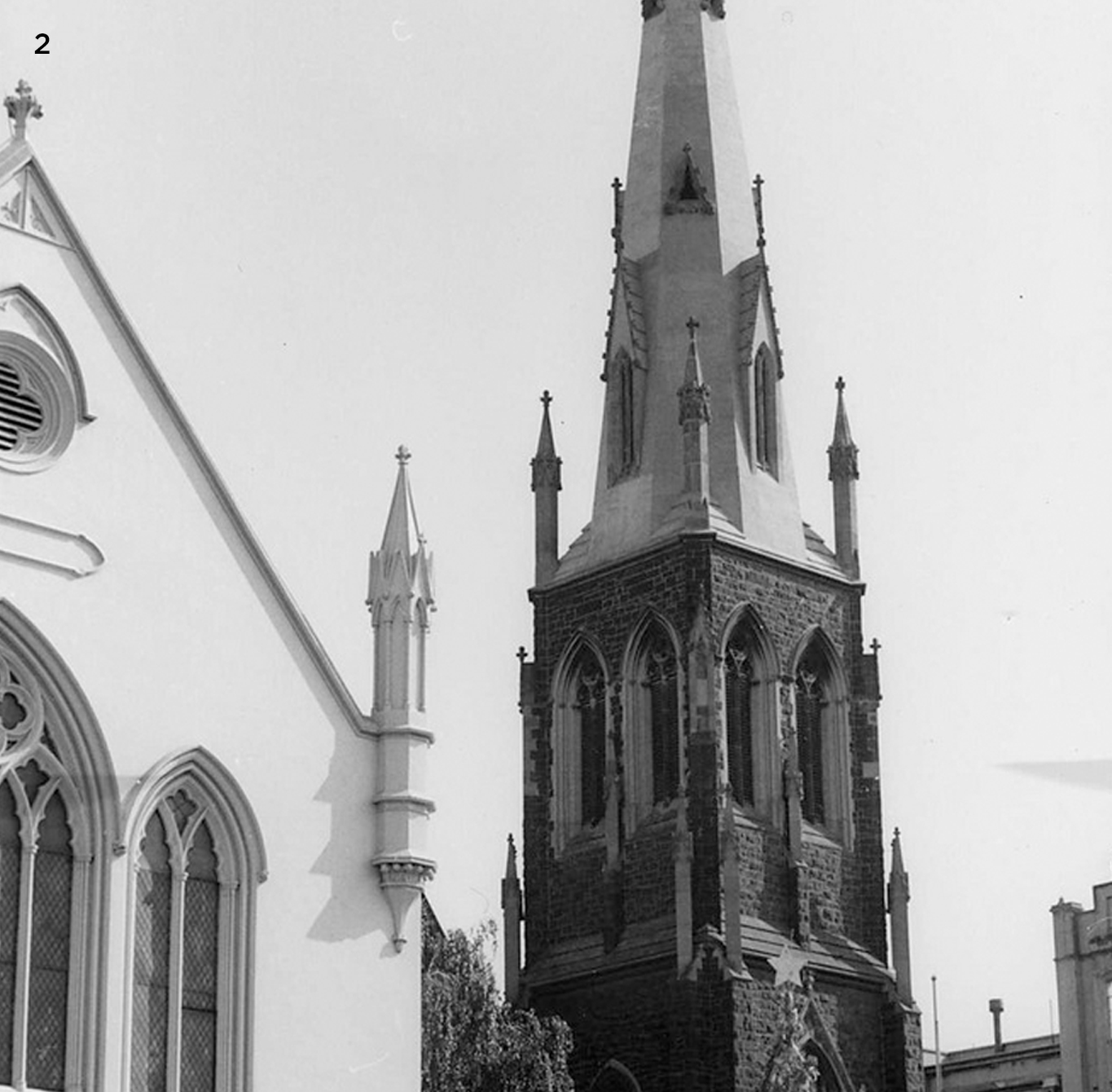Stop C3: Conference Hall


Click on the above to listen to audio of the Conference Hall
The hidden wall
Designed by architects Powell and Whitaker, the Gothic Revival style Conference Hall was built in 1888.It was leased to the Wesley Central Mission for evangelical and temperance work for £30 per year. The Conference Hall was demolished in 1970 and replaced by an office block known as Wesley House. The demolition of Wesley House revealed the rear wall of the Conference Hall incorporated into the structure of Nicholas Hall.
Working-class worship
The addition of a hall as part of a Wesleyan church complex was born out of a view among British Methodists that working people were less likely to worship in church buildings.1 The hall was used by the Mission for evangelical and temperance work until 1911.
The need for modest magnificence
In 1888, a visiting British clergyman Guy Pearce recommended, ‘burning down the Wesley Church and building a magnificent hall in its place’.2 His opinion was likely a reaction to the poor condition of the church buildings at the time, which were described as being in a dilapidated state.
If only the walls could talk
It appears they can. As mentioned previously, the Conference Hall was demolished in 1970 and replaced by a new five-storey office block known as Wesley House.In 2019, as part of the redevelopment works to the site, the original north wall of the hall was revealed. It revealed the unusual construction of the adjacent building Nicholas Hall, which was constructed using the existing north wall of the Conference Hall as its south wall.
Marking its place today
The Conference Hall was originally built on what had been a large rectangular garden fronting Lonsdale Street, reflected in the replanting of the garden today.
References
1Renate Howe and Shurlee Swain, The Challenge of the City, 1993 p. 7
Image References
- The Conference Hall (far left), 1922. Source: Central Mission Annual Report, 1922
- Part of the façade of the Conference Hall, with the church spire visible behind, 1963 Source: J.T. Collins Collection, La Trobe Picture Collection, State Library of Victoria